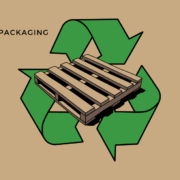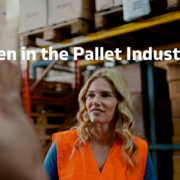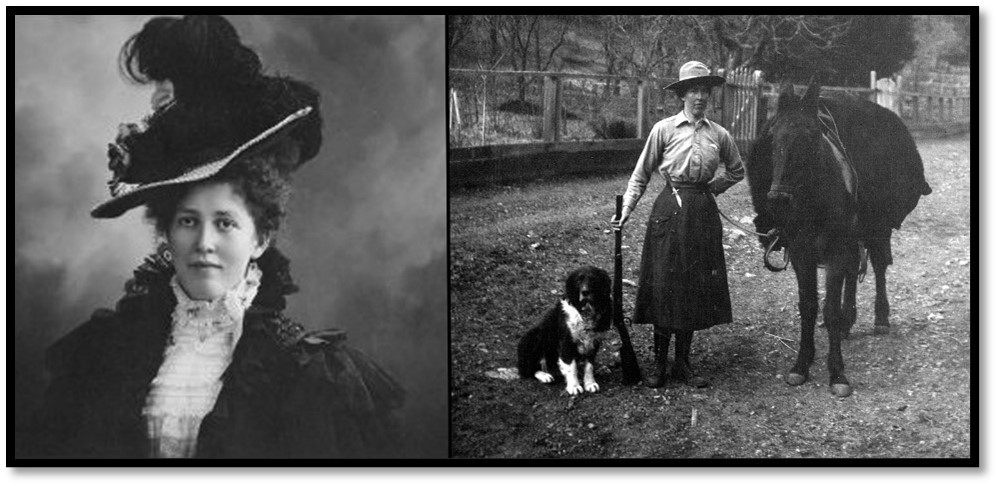Wood Pallets: An Eco-Friendly Choice
Sustainability is an ongoing challenge for industry supply chains. Consumers often don’t recognize the enormous complexity of a reliable supply chain. According to the National Wooden Pallet and Container Association, nearly two billion pallets are in use every day in the United States.
Within the industry, there are staunch advocates for both wood pallets and plastic pallets. Each group claims their choice is the most environmentally friendly.
Researchers at Penn State University decided to take an unbiased look at the debate. They found that wooden pallets are more eco-friendly and sustainable than plastic.
Top 3 Eco-Friendly Benefits of Wood Pallets
Renewable Resource
Wood pallets are made using sustainably sourced wood. The timber is often cut for other uses and the by-products are used for pallet construction. Pallet wood does not come from old-growth forests.
The forest products industry has worked hard over the decades to become a model of sustainability. In 2020, the NWPCA and Pallet Foundation put together an Environmental Product Declaration for wood pallets.
Working with the U.S. Forest Service’s Forest Products Lab, the UL-certified document is a testament to the positive environmental impact of wood pallet construction. Two new trees are planted for each one harvested, and 1.7 billion trees are planted in the United States every year.
In 2007 there were over twice as many hardwood trees in the U.S. than there were 50 years earlier. Trees are a naturally renewable resource, and responsible management creates more carbon-capturing trees than it harvests.
Plastic pallets are made with petroleum products. The extraction of these non-renewable fossil fuels produces air and water pollution as well as soil contamination. The Penn State study found that plastic pallets create far more aquatic and terrestrial ecotoxicity and contribute much more to global warming than their wooden counterparts.
The simple fact is that wood pallets are made of trees, not oil. They are less harmful to the environment at every step, and they contribute to a more environmentally sustainable supply chain.
Reduce, Reuse, Recycle
The most eco-friendly products are those that can be reused. Wood pallets can be used multiple times for their main purpose and be repurposed repeatedly. Damaged pallets can be repaired or made into other shipping materials.
When a pallet is no longer viable for shipping, the wood becomes everything from furniture and home décor to mulch and biofuel. A simple search for pallet wood on Pinterest reveals hundreds and hundreds of projects that use wooden pallets that have been retired from active use.
Reusing pallet wood for home projects reduces the use of new hardwood timber, reduces the purchase and consumption of materials that are not sustainably sourced, and decreases our reliance on plastic.
Recycling pallet wood into products like mulch and animal bedding saves newly harvested timber for other uses.
Estimates are that about 93% of pallets in the United States are made of wood and that 95% of those pallets are recycled by companies, manufacturers, retailers, and consumers.
Wood Pallets are Biodegradable
The recycling of wood pallets has grown tremendously over the past 20 years. That alone made wood pallets increasingly environmentally friendly and extended their useful lives.
But at some point, pallet wood is not going to be useful anymore. When it reaches the end of its lifespan, a wood pallet does the most eco-friendly thing of all: it biodegrades.
Properly treated and disposed of pallet wood decomposes. It adds nutrients to the soil, provides homes for plant and animal life, and leaves nothing behind but the fertile ground for new trees.
The small percentage of pallet wood that ends up being disposed of does exactly what we want our trash to do, it benefits the environment. After being recycled, reused, and repurposed for years, responsibly discarded wooden pallets nourish the environment rather than disrupting ecosystems and clogging our waterways.
Proponents of plastic pallets point to their durability and longevity. And they certainly can be strong and make many trips as pallets. But they’re not sustainably sourced, they’re not easily reused or recycled, and they don’t biodegrade.
Wooden pallets are an integral part of a reliable, environmentally friendly, sustainable supply chain. As consumers become aware of their complicated environmental footprint, they will be looking for companies that use wood pallets in their supply chains.

 Woodview Media
Woodview Media
 Woodview Media
Woodview Media












